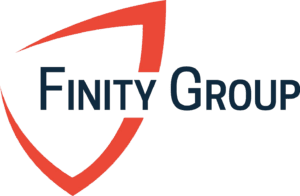Written by: Corey Janoff
We get a lot of questions from business or practice owners and self-employed individuals about ways to save on taxes. Assuming they are putting the maximum allowed into a 401(k) (many are not), a cash balance defined benefit pension plan can be a great option to implement for additional retirement and tax savings. Today we will look at cash balance plan pros and cons so you can decide if this is something worth exploring.
What Is a Cash Balance Pension Plan?
A cash balance plan is a type of defined benefit pension plan. Traditionally, defined benefit pension plans are funded with the objective of paying out a promised benefit for the remainder of one’s life in retirement. As a result, an actuary needs to be involved to run testing for the plan to ensure it is adequately funded to meet the promised benefits. If the account is underfunded, the business (or individual if self-employed) may be required to add additional monies into the account. If overfunded, future contributions may be limited.
You may be thinking, this already sounds like a headache and have zero interest in overseeing one of these plans for the remainder of your employees’ lives. However, most people don’t actually utilize the plan for life. They are often set up and funded for a decade or so and then terminated, enabling the participants in the plan to roll their account balance into an IRA or other retirement account.
When Does Considering a Cash Balance Plan Make Sense?
Cash balance plans are a great way to save for retirement while reducing taxes. As a business owner or self-employed individual, if you are making a lot of money, and you are already contributing the maximum allowed to a 401(k) ($69,000 +$7,500 if age 50+), this could be a good option to consider. Like a 401(k), if the owner wants to stuff a bunch of money into his or her account, the company will also have to add some money to employees’ accounts. There are ways to make it overly favorable for the owner, but whether it makes sense depends on the number of employees, their ages & income, and some other factors.
Cash Balance Plan for Small Businesses
For many small business owners, this can be a great option. For example, we recently looked at implementing a cash balance plan for a surgeon who has his own practice and a handful of employees. By implementing certain mandatory company contribution rates into employees’ accounts, between the 401(k) & cash balance plan for the owner and his spouse (employed at the practice), it was estimated they could put about $145,000 into their accounts. The company would be required to contribute about $15,000 in total to the employees’ accounts. There are also some company-paid plan administrative expenses in addition (tax-deductible business expenses, of course).
Not a bad deal! We are able to invest $145,000 per year into tax sheltered accounts earmarked for retirement for the business owner, and the employees get some free benefits as well. At the owner’s tax rate, the tax savings alone will more than offset the costs.
Not all plans pencil out this favorably, and the tax implications will vary from person to person. It’s important to consult with your tax professional to understand the exact tax implications for you.
Cash Balance Pension Plan for Self Employed Individuals
If you’re self-employed with no W2 employees, you can be super flexible with how you save for retirement. A cash balance pension plan can be a great tool to consider after you are contributing the $69,000 maximum to a 401(k). If you have additional earnings that you want to save for retirement pre-tax each year, a cash balance plan is worth looking into. The amount you can contribute is dependent on your earnings and your age. The benefits can be more advantageous the older you are, as the contribution limits increase with age.
Cash Balance Pension Plan Maximum Contribution
Because the contribution amount is based on the future benefits promised by the plan, it can vary from plan to plan. There is also a hard contribution limit per year based on age, along with a lifetime maximum. For example, someone in their mid-30’s may be allowed to contribute up to about $100,000 per year to a cash balance plan, whereas someone in their 60’s could contribute upwards of $350,000 per year. Again, this is all pre-tax, so a great way to reduce taxes while saving for retirement.
There is also a lifetime limit to cash balance plans, which adjusts each year for inflation. That limit is approximately $3.4 million currently as of 2024. As a result, these plans typically are not funded forever. Most cash balance plans are funded for about 10 years, typically in the latter stages of one’s career while trying to stash away as much as possible on that home stretch to retirement. However, there’s no reason you can’t start one sooner, max fund it for a decade, then terminate the plan and roll the balance into your 401(k) or IRA.
Cash Balance Plan Pros and Cons
With everything, there are advantages and disadvantages. No investment is perfect in all ways. Here are some quick highlights of the pros and cons of cash balance plans.
Pros of Cash Balance Plans
Pre-Tax Contributions
As mentioned already, you can make pre-tax contributions to a cash balance pension plan. This is especially attractive for those in higher income tax brackets, as you are able to reduce your taxable income dollar-for-dollar by the amount you contribute to the plan.
High Contribution Limits
The contribution limits for cash balance pension plans are considerably higher than other retirement accounts. In the latter stages of one’s career, you could save upwards of $350,000/year pre-tax into a cash balance plan.
Ability to Roll Money into an IRA/401k
Most cash balance plans have a provision written into them that allows participants to roll their vested balance into another retirement plan, such as a 401(k) or IRA. This is ideal for someone who doesn’t want to keep the money in the plan when they leave the employer or retire.
Cons of Cash Balance Plans
Limited Growth
Because cash balance plans are defined benefit pension plans, the employer is on the hook to ensure the end balance is what they promised. As a result, they intentionally set the target growth rate somewhat conservatively. For example, the plan may provide a 5% annual interest credit. If the investments in the plan do better than 5%, the excess gives the employer flexibility. They could contribute less to the plan the following year. However, if the underlying investments perform worse than the target rate, the employer may be required to contribute more the following year to get things in line.
Because of this, the investment portfolio is often invested more conservatively, with a rather even mix of stocks and bonds. A big decrease in portfolio value could create some problems for the employer promising the benefits, so minimizing that possibility is crucial.
Administrative Costs
Since cash balance plans are defined benefit plans, an actuary needs to be involved and run annual testing requirements for the plan to ensure plan is on track to be able to pay the promised benefits. Also, with employees there are nondiscrimination rules (business owners can’t just put all the money into the owners’ accounts), so those contribution ratios must be calculated as well. The underlying investment portfolio must also be managed to achieve the target growth rate for the plan. Due to these factors, cash balance plans typically aren’t do-it-yourself investment accounts, as numerous professionals are needed to implement and maintain them.
The Employer Bears the Investment Risk
All else being equal, cash balance plans typically have lower growth rates over time than other investment accounts where one can invest more aggressively for more long-term growth potential. No guarantees of course. Because the employer is implementing the plan, the employer bears the investment risk in cash balance plans. If the plan underperforms, the employer must make up the different with increased contributions. You definitely want to have a strong cashflow positive business so you can afford to make up the difference if required. The good news is, that’s more money going in pre-tax.
Is a Cash Balance Plan Right for You?
While not for everyone, cash balance pension plans can be a great option to consider for business owners and self-employed individuals looking to save more for retirement. If you’re already contributing the maximum $69,000/year to a 401(k) (plus $7,500 if age 50+) and you want to stash away more money pre-tax, a cash balance plan could be worth looking into.
Feel free to get in touch with one of our advisors to see if a cash balance plan is right for you!
Related Blog Posts:
- 10 Tax Deductions for Doctors
- Backdoor Roth IRA
- How Much Money Does a Doctor Need to Retire
- Retirement Plans for Doctors
- What is a Cash Balance Pension Plan?
Disclosures:
Investments involve the risk of loss, including total loss of principal. Consult with your tax professional for specific tax advice pertaining to your particular situation.





